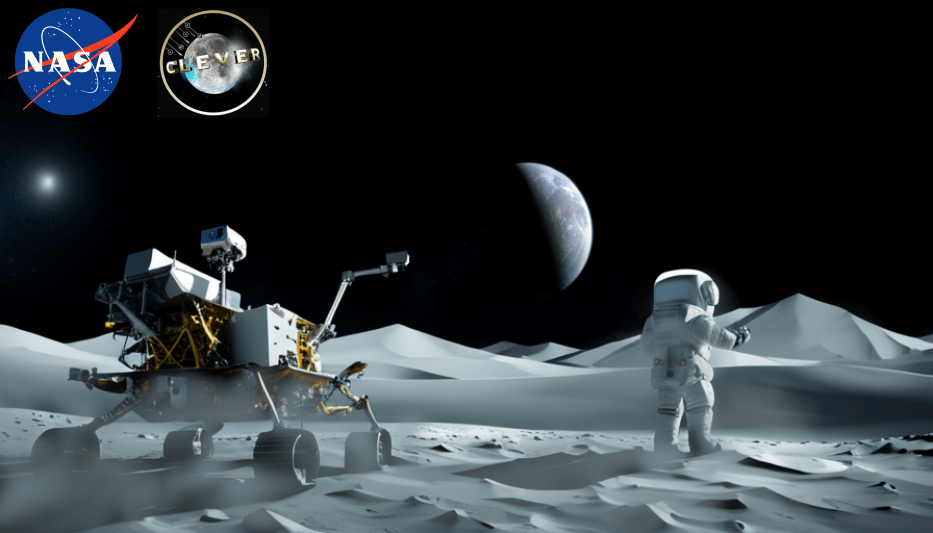
Lunar dust poses a major operational hazard to human operations on the surface of the Moon, and to the support systems, equipment, and instrumentation needed to sustain long-term lunar missions. Natural dust lofting and anthropogenic activities can cause dust to intrude into fabrics, bearings, and moving parts where the sharp and irregular grains cause abrasion, wear, and accelerated failure. The Apollo missions found that lunar dust readily adheres to exposed surfaces, increased friction and wear in EVA suits, and coated thermal radiators and solar cells. With the renewed interest on lunar exploration, multi-faceted lunar dust mitigation solutions that can be applied to a variety of surfaces or substrates must be developed, and the underlying physics of the problem must be explored.
Active dust mitigation systems typically displace dust from surfaces using electric fields, fluidal mechanisms, mechanical vibrations, and electron or plasma charging of dust grains. Such approaches are ideal for applications where frequent dust exposure is expected. Among the next-generation active dust removal strategies, Electrodynamic Dust Shields (EDS) have gained significant attention thanks to their low power consumption and applicability to a variety of substrates. The movement of dust by electrostatic-based technologies on the Lunar surface is determined by a complex dynamic balance between electrophoretic (Coulombic), dielectrophoretic, gravitational, drag, image charge, adhesion, and surface tension forces. Understanding these interactions and developing appropriate M&S tools is hence expected to result in safer operational configurations that succeed in the performance goals of reducing the required potential differences, preventing arcing, and maximizing dust removal.

LGST Lab vacuum chamber used for lunar dust experimentation
The LGST Lab is part of the Center for Lunar Environment and Volatile Exploration Research (CLEVER) led by Dr. Thomas Orlando at the Georgia Institute of Technology. Our contribution focuses on the characterization and mitigation of lofted dust in airless planetary bodies through the development of advanced analytical and numerical simulation frameworks, and the testing of new rigid and flexible EDS designs using vacuum chamber experiments. We are currently laying the foundations for future low-gravity experimental campaigns where we will study problems of fundamental and technical interest.
Student leads:
Luca Scifoni
Conference Presentations:
- R. Fonteyne, F. Isidori Pacelli, L. Scifoni, M. J. Schaible, M. L. Shofner, E. Ryan, L. Zhai, J. Linsey, T. Orlando, Á. Romero-Calvo, “Dust Mitigation Optimization Through Numerical and Experimental Studies”, NASA Exploration Science Forum, Washington University in St. Louis, July 23-25, 2024
- F. Isidori Pacelli, L. Scifoni, Á. Romero-Calvo, “EDS testing for lunar dust mitigation”, Analog Frontiers Conference, Italian Space Agency, May 20, 2024
- L. Scifoni, F. Isidori Pacelli, R. Fonteyne, M. J. Schaible, M. L. Shofner, E. Ryan, L. Zhai, J. Linsey, T. Orlando, Á. Romero-Calvo, “Optimizing Lunar Dust Mitigation: Assembly and Analysis of Electrodynamic Dust Shield Systems”, LSIC Spring Meeting, Laurel, MD, April 23, 2024
- R. Fonteyne, L. Scifoni, F. Isidori Pacelli, Á. Romero-Calvo, “Numerical Modeling of Electrodynamic Dust Shielding for Lunar Dust Mitigation”, LSIC Spring Meeting, Laurel, MD, April 23, 2024
- R. Fonteyne, F. Isidori Pacelli, L. Scifoni, M. Schaible, Á. Romero-Calvo, “Enhancing Lunar Dust Mitigation: A Study on Electrodynamic Dust Shield Efficacy through Modeling and Vacuum Experiments”, ExplOrigins 2024 Colloquium, Atlanta, GA, February 8-9, 2024

